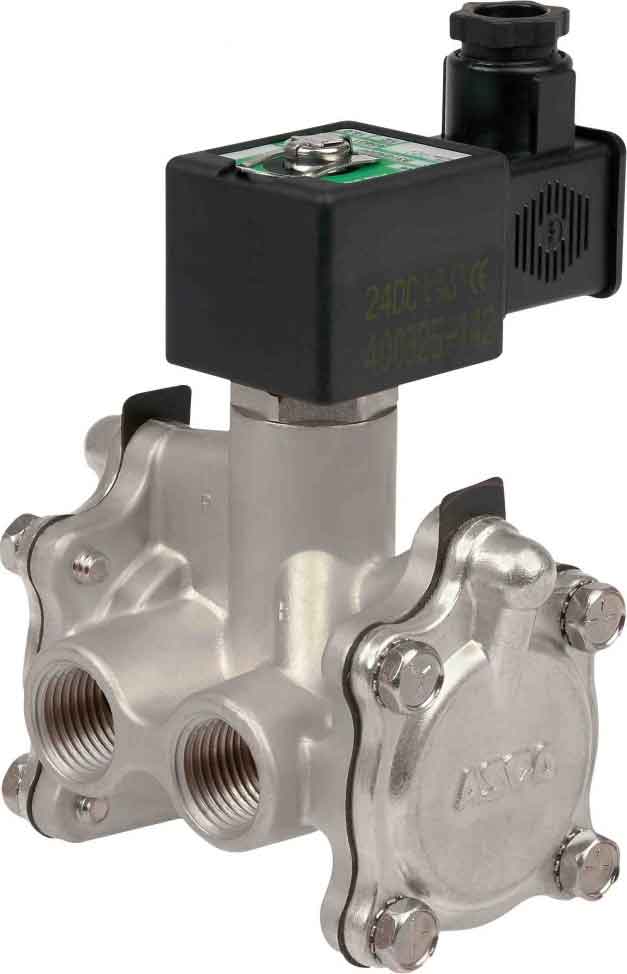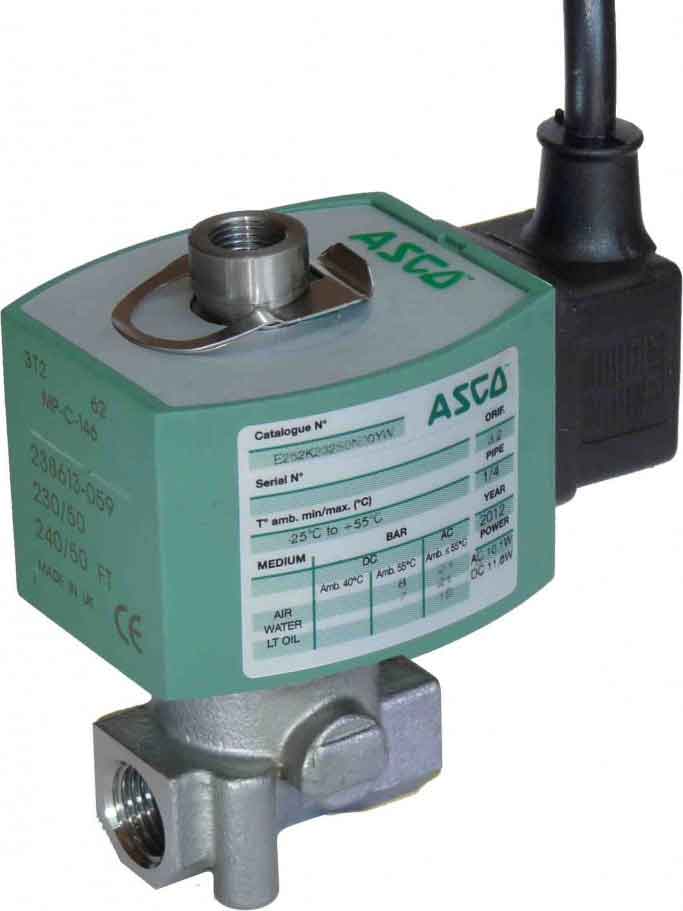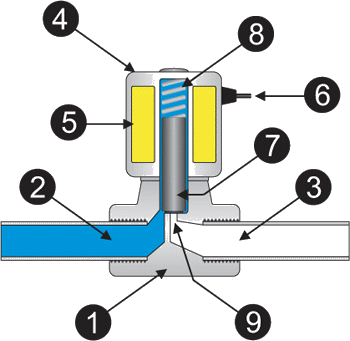 |
Solenoid valves |
What is a Solenoid Valve and how does it work?
A solenoid valve, otherwise known as an electrically-operated valve is an automatic valve which serves the purpose of removing the need for an engineer to operate a valve manually.
Solenoids operate using an electromagnetic solenoid coil to change the state of a valve from open to closed, or vice-versa. If the solenoid valve is 'normally closed', when the coil is energized, the valve gets lifted open by the electromagnetic force produced by the coil.

Explain the different technologies of solenoid valves
There are 3 main different technologies; Direct acting, In-direct acting and Forced-lift piston type.
- Direct-acting valves require no differential pressure to remain in their rest state and in the NC version, they will only allow flow once energized. These valves are very robust and can be used in a process line for simple isolation purposes of for safety purposes. The can also be used on the outlet to a tank where sometimes pressure can get very low but the valve needs to remain open.
- In-direct acting valves require a pressure differential across the inlet and outlet to allow them to stay in their rest state. For example if a valve was normally open and there was not a large enough pressure differential, the valve could be intermittent and possibly close if inlet pressure dropped too low. These valves should only be used if pressure levels are within the parameters specified in the datasheet and IOM instructions.
- Forced-lift valves are used in high pressure applications where neither of the above valve types can deal with the higher pressure processes such as 40 Bar plus. This valve uses a much bigger and higher power coil to open or close and the seat of the valve is directly connected to the bottom of the piston/plunger assembly eliminating the need for a diaphragm.
In what applications would you use a Solenoid Valve or an electrically operated valve?
Any application where a clean (non-viscous) process media, such as very clean liquids/gases/light oils need to be controlled.
Simple on/off valves are the most popular as many process lines only need flow or no flow. Solenoid valves can be used in factories/plants where compressed air is not available. They can also be used in place of larger valves such as electrically actuated ball valves, but without taking up anywhere near as much space. Operation is also much quicker than other valve technologies.

Other solenoid operated valves use a more advanced technology meaning they can be used to proportionally control flow or pressure depending on a varying input signal. This is where another component further downstream needs a specific pressure or flow to maintain the correct working conditions.
Most common input signal used would be a 4-20mA loop signal which most factories will have at their disposal usually controlled by a PLC or similar system.
Many different valve body and seal materials are available, ranging from Brass, Cast Steel, Aluminium and Stainless Steel. Standard seals are usually NBR (Buna Nitrile) but EPDM and PTFE available for more corrosive environments.
Material choice all depends on the media going through the valve. If you are unsure on the optimum material for your application, it is always best to talk it through with a Norgren technical specialist first.
What are the different parts of a solenoid valve?
The illustration below depicts the basic components of a solenoid valve. The valve shown in the picture is a normally-closed, direct-acting valve. This type of solenoid valve has the most simple and easy to understand principle of operation.

1 Valve Body
2 Inlet Port
3 Outlet Port
4 Coil/Solenoid
5 Coil Windings
6 Lead Wires
7 Plunger
8 Spring
9 Orifice
Valve Solenoid Basics
Reference(s) ..
www.processindustryforum.com
www.solenoid-valve-info.com